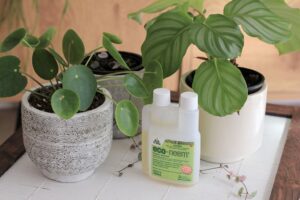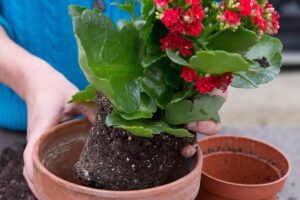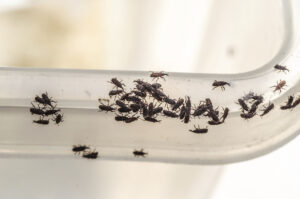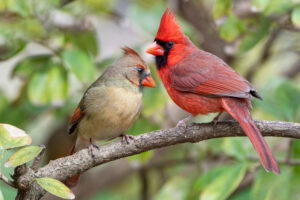
In the vibrant world of flora, diversity reigns supreme, with an array of blooms adorning landscapes and captivating hearts with their beauty and charm. Among the multitude of flowers, those that start with the letter “H” offer a delightful assortment of colors, fragrances, and botanical wonders. From the fragrant herald of spring to the enigmatic winter rose, each flower holds its own unique allure and significance. In this article, we embark on a journey to discover and celebrate the captivating flowers that begin with the letter “H.”
Hyacinth: A Fragrant Herald of Spring
Botanical Profile
The hyacinth, belonging to the genus Hyacinthus, is a perennial bulbous plant renowned for its fragrant clusters of flowers and vibrant colors.
Genus Hyacinthus
Hyacinthus encompasses a small genus of flowering plants in the family Asparagaceae, native to the eastern Mediterranean region and southwestern Asia. These plants are characterized by their narrow, strap-shaped leaves and dense spikes of fragrant, bell-shaped flowers.
Distinctive Features
Hyacinths are distinguished by their compact flower spikes, which bear numerous florets in shades of blue, purple, pink, white, and yellow. The flowers emit a sweet, intoxicating fragrance that heralds the arrival of spring, making them a popular choice for gardens, borders, and containers.
Cultivation and Care
To cultivate hyacinths successfully, provide well-drained soil and ample sunlight, ensuring proper drainage to prevent waterlogging. Plant bulbs in the fall, spacing them several inches apart and covering them with a layer of soil. Water sparingly until growth appears, gradually increasing moisture as the plants establish themselves. Deadhead spent blooms to promote continued flowering and apply a balanced fertilizer in early spring to support healthy growth.
Symbolism and Uses
Hyacinths hold various symbolic meanings in different cultures, often associated with rebirth, renewal, and new beginnings. In floral arrangements, hyacinths add a touch of elegance and fragrance, making them popular choices for weddings, celebrations, and special occasions. Additionally, hyacinth essential oil is prized for its therapeutic properties, used in aromatherapy and perfumery to promote relaxation and uplift the senses.
Hellebore: The Enigmatic Winter Rose
Taxonomy and Characteristics
Hellebores, belonging to the genus Helleborus, are a group of perennial flowering plants in the family Ranunculaceae, native to Europe and Asia.
Genus Helleborus
The genus Helleborus comprises approximately 20 species of evergreen and deciduous perennials, known for their nodding, bell-shaped flowers and leathery, serrated leaves. Common species include Helleborus niger (Christmas rose), Helleborus orientalis (Lenten rose), and Helleborus foetidus (stinking hellebore).
Intriguing Attributes
Hellebores are prized for their early bloom time, often flowering in late winter or early spring when few other plants are in bloom. The flowers come in a range of colors, including white, pink, purple, and green, with some varieties boasting speckled or spotted petals. Hellebores are also known for their long-lasting blooms, which can persist for several weeks, providing much-needed color and interest in the winter garden.
Growing Hellebores
To grow hellebores successfully, choose a site with dappled shade or partial sunlight, as excessive sun exposure can scorch the delicate blooms. Provide well-drained, humus-rich soil with a slightly acidic to neutral pH. Water hellebores regularly, especially during dry periods, and mulch around the base of the plants to conserve moisture and suppress weeds. Propagate hellebores by division or seed, taking care to separate clumps in early spring or collect ripe seed pods for sowing.
Folklore and Mythology
Hellebores have a rich history steeped in folklore and mythology, with various legends and traditions surrounding these enigmatic plants. In ancient times, hellebores were believed to possess medicinal properties and were used in folk remedies to treat various ailments. Additionally, hellebores were associated with magic and ritual, believed to ward off evil spirits and protect against witchcraft.
Hibiscus: The Exotic Beauty of the Tropics
Diversity in Genus Hibiscus
Hibiscus is a diverse genus of flowering plants in the family Malvaceae, comprising hundreds of species and cultivars, including both tropical and hardy varieties.
Tropical Hibiscus
Tropical hibiscus plants are renowned for their large, showy flowers in vibrant shades of red, pink, orange, yellow, and white. These plants thrive in warm, humid climates and are commonly grown as ornamental shrubs or potted specimens.
Hardy Hibiscus
Hardy hibiscus, also known as rose mallow or swamp mallow, are cold-tolerant perennials native to North America. These plants produce large, saucer-shaped flowers in shades of pink, red, or white and are prized for their late summer bloom time and vigorous growth habit.
Cultivation Techniques
To cultivate hibiscus successfully, provide full sunlight and well-drained soil with ample organic matter. Water regularly, especially during hot, dry periods, and mulch around the base of the plants to retain moisture and suppress weeds. Prune hibiscus plants selectively to remove dead or damaged branches and encourage bushy growth and abundant flowering. Monitor for pests such as aphids, mealybugs, and spider mites, and treat infestations promptly with insecticidal soap or neem oil.
Cultural Significance
Hibiscus holds cultural significance in many societies around the world, symbolizing beauty, love, and femininity. In Hawaii, the hibiscus flower is the state flower and is used in leis and other traditional decorations to welcome visitors and celebrate special occasions. Additionally, hibiscus flowers are edible and are used to make herbal teas, jams, and syrups, prized for their tangy flavor and vibrant color.
Hoya: The Charming Wax Plant
Overview of Genus Hoya
Hoya, commonly known as wax plant or porcelain flower, is a genus of tropical and subtropical flowering plants in the family Apocynaceae, native to Asia and Australia.
Varied Species
The genus Hoya encompasses over 200 species of evergreen vines and shrubs, prized for their waxy, star-shaped flowers and thick, succulent foliage. Common species include Hoya carnosa, Hoya kerrii, and Hoya pubicalyx, each with its own unique characteristics and growing requirements.
Notable Characteristics
Hoyas are renowned for their charming blooms, which typically appear in clusters or umbels and emit a sweet, honey-like fragrance. The flowers come in a range of colors, including white, pink, red, and purple, with some varieties boasting variegated or speckled petals. Hoyas are also valued for their glossy, leathery leaves, which retain moisture and give the plants a lush, tropical appearance.
Growing Hoyas Indoors
To grow hoyas successfully indoors, provide bright, indirect sunlight and well-drained, aerated soil with good moisture retention. Allow the soil to dry slightly between waterings, as hoyas are sensitive to overwatering and prone to root rot. Maintain moderate humidity levels by misting the foliage regularly or placing the plants on a pebble tray filled with water. Propagate hoyas by stem cuttings or layering, taking care to provide adequate warmth and humidity for successful rooting.
Aesthetic Appeal
Hoyas are prized for their ornamental value, adding a touch of elegance and sophistication to indoor spaces. The unique blooms and glossy foliage make hoyas popular choices for hanging baskets, trellises, and living walls, where they can cascade gracefully and create a lush, tropical ambiance. Additionally, hoyas are low-maintenance plants that thrive in indoor environments, making them ideal choices for busy plant enthusiasts and urban dwellers alike.
In embracing the diverse array of flowers that begin with the letter “H,” we celebrate the beauty, resilience, and cultural significance of these remarkable plants. From the fragrant herald of spring to the exotic beauty of the tropics, each flower offers a unique glimpse into the rich tapestry of the botanical world, enriching our lives with color, fragrance, and botanical wonders.







